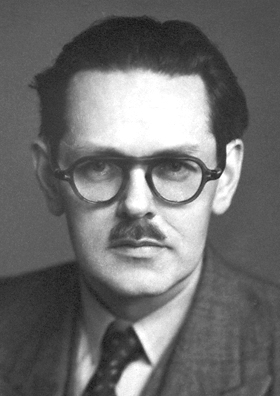| << Chapter < Page | Chapter >> Page > |
Archer J.P. Martin ( [link] ) and Anthony T. James ( [link] ) introduced liquid–gas partition chromatography in 1950 at the meeting of the Biochemical Society held in London, a few months before submitting three fundamental papers to the Biochemical Journal . It was this work that provided the foundation for the development of gas chromatography. In fact, Martin envisioned gas chromatography almost ten years before, while working with R. L. M. Synge ( [link] ) on partition chromatography. Martin and Synge, who were awarded the chemistry Nobel prize in 1941, suggested that separation of volatile compounds could be achieved by using a vapor as the mobile phase instead of a liquid.



Gas chromatography quickly gained general acceptance because it was introduced at the time when improved analytical controls were required in the petrochemical industries, and new techniques were needed in order to overcome the limitations of old laboratory methods. Nowadays, gas chromatography is a mature technique, widely used worldwide for the analysis of almost every type of organic compound, even those that are not volatile in their original state but can be converted to volatile derivatives.
Gas chromatography is a separation technique in which the components of a sample partition between two phases:
According to the state of the stationary phase, gas chromatography can be classified in gas-solid chromatography (GSC), where the stationary phase is a solid, and gas-liquid chromatography (GLC) that uses a liquid as stationary phase. GLC is to a great extent more widely used than GSC.
During a GC separation, the sample is vaporized and carried by the mobile gas phase (i.e., the carrier gas) through the column. Separation of the different components is achieved based on their relative vapor pressure and affinities for the stationary phase. The affinity of a substance towards the stationary phase can be described in chemical terms as an equilibrium constant called the distribution constant K c , also known as the partition coefficient, [link] , where [A] s is the concentration of compound A in the stationary phase and [A] m is the concentration of compound A in the stationary phase.
The distribution constant (K c ) controls the movement of the different compounds through the column, therefore differences in the distribution constant allow for the chromatographic separation. [link] shows a schematic representation of the chromatographic process. K c is temperature dependent, and also depends on the chemical nature of the stationary phase. Thus, temperature can be used as a way to improve the separation of different compounds through the column, or a different stationary phase.

Notification Switch
Would you like to follow the 'Physical methods in chemistry and nano science' conversation and receive update notifications?